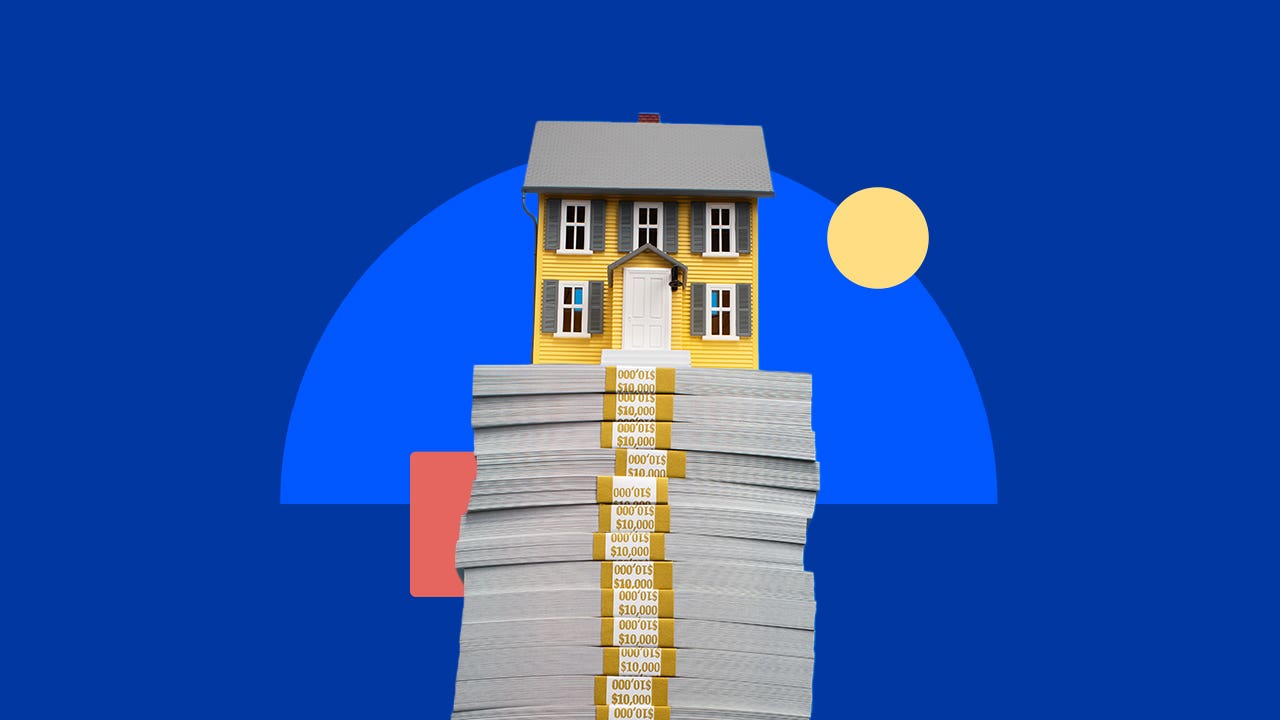Mortgage rates rise amid renewed inflation fears

The Bankrate promise
At Bankrate we strive to help you make smarter financial decisions. While we adhere to strict , this post may contain references to products from our partners. Here's an explanation for .
Current mortgage rates
| Loan type | Current | 4 weeks ago | One year ago | 52-week average | 52-week low |
|---|---|---|---|---|---|
| 30-year | 7.33% | 7.09% | 6.61% | 7.15% | 6.48% |
| 15-year | 6.66% | 6.46% | 5.98% | 6.50% | 5.89% |
| 30-year jumbo | 7.28% | 7.03% | 6.31% | 7.04% | 6.25% |
The 30-year fixed mortgages in this week’s survey had an average total of 0.27 discount and origination points. Discount points are a way for you to reduce your mortgage rate, while origination points are fees a lender charges to create, review and process your loan.
Monthly mortgage payment at today’s rates
$2,115
The national median family income for 2023 was $96,300, according to the U.S. Department of Housing and Urban Development, and the median price of an existing home sold in February 2024 was $384,500, according to the National Association of Realtors (NAR). Based on a 20 percent down payment and a 7.33 percent mortgage rate, the monthly payment of $2,115 amounts to 26 percent of the typical family’s monthly income.
Will mortgage rates go down?
The possibility of declining mortgage rates keeps fading. Blame a still-booming U.S. economy, and stubborn inflation.
“March inflation figures were very bad, which also means bad news for interest rates,” says Lawrence Yun, chief economist at the National Association of Realtors.
Last week, the U.S. Labor Department said the inflation rate had picked up to a pace of 3.5 percent. That means it’s unlikely the Federal Reserve will cut rates any time soon. The central bank left rates unchanged in March — and that was before the latest numbers showed the Fed seems to be losing ground in the inflation fight.
To be clear, mortgage rates are not set directly by the Fed, but by investor appetite, particularly for 10-year Treasury bonds, the leading indicator for fixed mortgage prices. That can lead to intense rate swings — they soar on news of Fed hikes, then plummet in anticipation of a cut.
Mortgage rates are also chained to inflation, a metric the Fed has been moving to control. While most Fed members still expect three rate cuts this year, one regional Fed president now is predicting just one rate cut in 2024.
“Not the news we want for the spring market,” says Melissa Cohn of William Raveis Mortgage.
Loan applications rose 3.3 percent this week, according to the Mortgage Bankers Association, while home prices remain elevated.
“Despite these higher rates, application activity picked up, possibly as some borrowers decided to act in case rates continue to rise,” said Joel Kan, the group’s deputy chief economist.
While NAR reported an uptick in inventory in February, many markets still don’t have enough listings.
-
The Bankrate.com national survey of large lenders is conducted weekly. To conduct the National Average survey, Bankrate obtains rate information from the 10 largest banks and thrifts in 10 large U.S. markets. In the Bankrate.com national survey, our Market Analysis team gathers rates and/or yields on banking deposits, loans and mortgages. We’ve conducted this survey in the same manner for more than 30 years, and because it’s consistently done the way it is, it gives an accurate national apples-to-apples comparison. Our rates differ from other national surveys, in particular Freddie Mac’s weekly published rates. Each week Freddie Mac surveys lenders on the rates and points based on first-lien prime conventional conforming home purchase mortgages with a loan-to-value of 80 percent. “Lenders surveyed each week are a mix of lender types — thrifts, credit unions, commercial banks and mortgage lending companies — is roughly proportional to the level of mortgage business that each type commands nationwide,” according to Freddie Mac.
Related Articles



